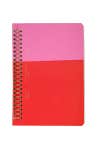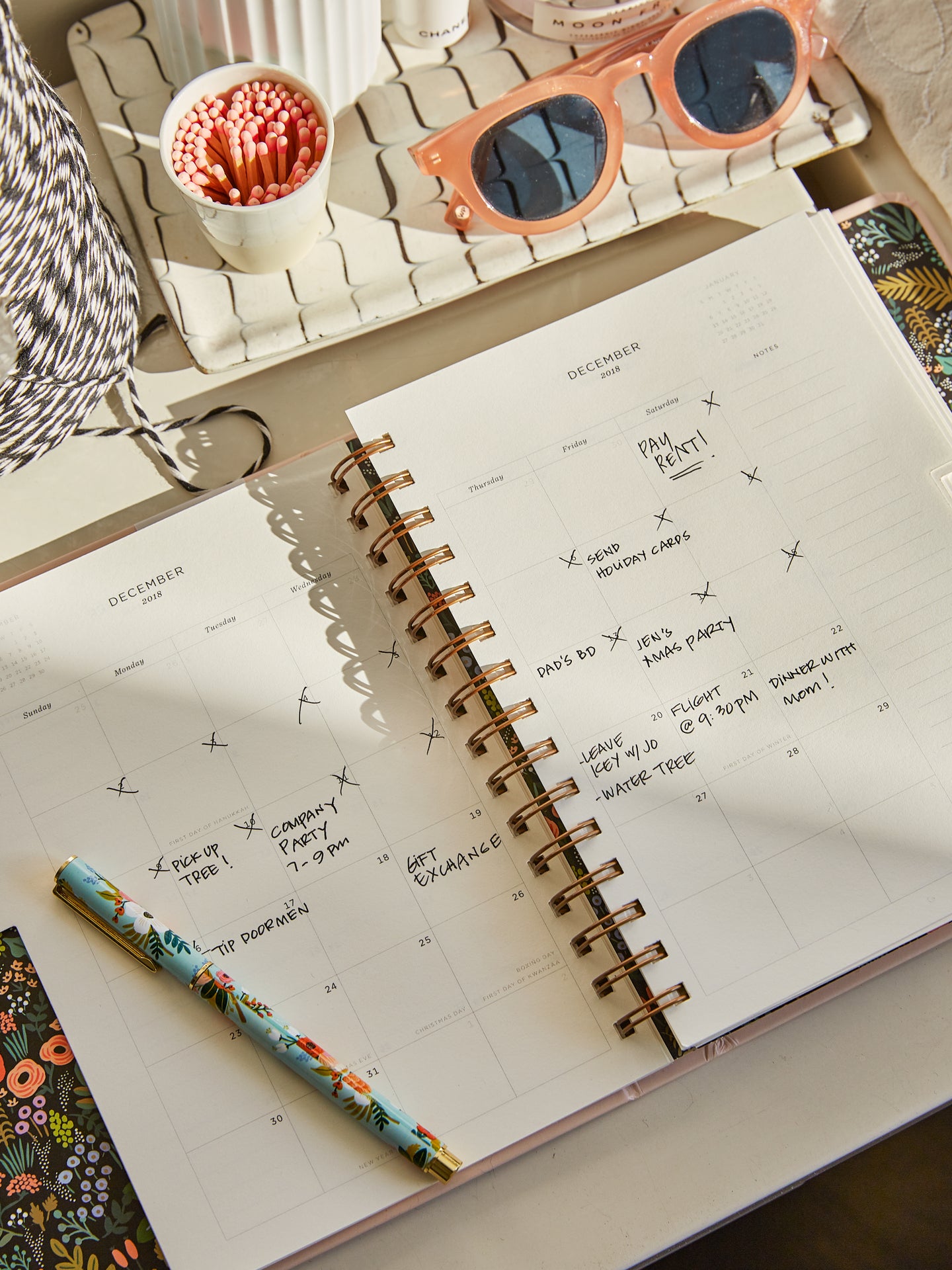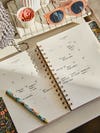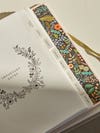Here’s How a Productivity Expert Plans Out Her Week
Listen and learn.
Updated Aug 7, 2019 10:27 PM
We may earn revenue from the products available on this page and participate in affiliate programs.
You know those people who always seem to have their act together? Or the friend who never misses a birthday, RSVP, or coffee date? Successful people might have different strategies for climbing the corporate ladder, but they do have on thing in common: perfect calendars.
While you might think that your schedule suits your work/life flow just fine, there’s an art to devising a well-planned agenda—and it has little to do with color coding. Finding the right time, place, and list for the tasks and events on your plate is crucial to conquering your goals. That’s why we tapped productivity expert and best-selling author of What the Most Successful People Do Before Breakfast Laura Vanderkam for her secrets for a better planner.
Whether you live and die by a paper trail or have sold your soul to Google Calendar, Vanderkam’s tips and tricks can be applied across all organizational platforms—traditional or digital. With 2019 on the horizon, there’s no better time than now to embrace a fresh start. Before you even think about heading to the store to pick out your planner, here are seven rules to consider first.
Understand Which Planner Will Work for You
The perfect planner will look different for everyone. If you already happen to know that you work best online, don’t force yourself to buy a physical agenda just because you feel like that’s the “right” choice. We picked our floral agenda and matching pen up from Rifle Paper Co.
“I use a paper planner, but it’s really just a notebook!” says Vanderkam. “Everyone likes something different, so it’s hard to say what makes a great and effective planner. Try asking a friend who’s happy with their planner for a recommendation. Try it. If you hate it, you can switch—you’ll just need to recopy the things you’ve already put in.”

Practice Makes Perfect
Practice, like, every day. Or else, you run the common risk of your pretty planner ending up in a junk drawer somewhere within the first week of use.
“The only thing that really matters for making an effective planner is that you use it consistently,” explains Vanderkam. “If you don’t trust that you will write down what you need and want to do in your planner, then it won’t help. If you do trust that you will do this, then any planner will work (including the cheap notebook I bought at Target).”
Not already in the habit of planning? Keep your book (or tab!) open front and center in a place you frequent. “If you never open it up, it can’t help you. I keep mine open on my desk next to me at all times,” adds Vanderkam.

Schedule Big Moments Every 30 Days
Dedicate the first of each month to jotting down every birthday, long weekend trip, and other major celebrations and moments. “Month by month is good for big things: seasonal celebrations, kids’ birthdays, vacations, work trips that require lots of planning, or homefront coverage,” shares Vanderkam.
This won’t just save you from doing it later, but you’ll be giving yourself a proper heads up to prep coordinating tasks (like buying gifts or booking transportation).
“You might also choose a goal to work on for each month. Thirty days is a good amount of time to try a habit with some seriousness without it seeming like you’re committing forever,” she adds.
Day-by-day planning is good for anything that’s immediate—turning in a project, answering a thorny email, setting a reminder to return a call or pick up a prescription.

Dedicate Friday Afternoon to the Week Ahead
Sometimes, finding the time to find the time is just as hard. That’s why it’s helpful to schedule a consistent day and time block to sit down with your planner and fill it out. For Vanderkam, that golden day is Friday.
“I plan my weeks on Friday afternoons. That’s when I sit down and figure out my priorities for the upcoming week,” says Vanderkam. “That’s when I sit down and figure out my priorities for the upcoming week in three categories: work, relationships, self.”
That said, allow yourself some leeway when it comes to this rule.
“In general, though, you should put in dates as soon as you know them. So as soon as your kids’ school calendar comes out, put those dates in your calendar. When you put in for your vacation days, put those in the calendar. If you’ve agreed to do something at a specific time, put it in—even if it’s eight months from now. Otherwise, you will forget.”
Take on Your Hardest Tasks ASAP
You know that job you keep pushing off and pushing off? It’s time to start taking that task head-on.
“The beginning of the day is good for focused work that requires more discipline and energy,” says Vanderkam. “Not for everyone, but for most people. So if you can carve out, say, 8:30 a.m. to 10 a.m. for a big, important project, you will probably make progress.”
Emails can be dealt with at any point, she notes, so push those everyday duties to later when your energy starts to wear. The one thing you should always schedule to take on at the end of the day?
“Figure out your top priorities for the next day. Before you leave work in the evening, map out your next day. That way you don’t waste time and energy deciding what to do when you show up in the morning,” she suggests.
Stick to the Necessities
Unless, that is, you’re an exceptionally forgetful person. What you include in your planner is just as important as what you don’t include, so be weary, as filling your schedule up with too much stuff can be cause for distraction—not productivity.
“Planners can be good for tracking habits, but if something is such a habit that you no longer think about it, then it’s probably not worth putting in the planner,” says Vanderkam. “You probably already brush your teeth, for instance. You can leave that out. If you don’t floss, but you’d like to, that might be worth putting in.”

Color Code, But Only If it Makes You Happy
On screen, it’s easier to track down like tasks when you’re scrolling if there’s a point of visual connection. When it comes to paper agendas, however, color coding has more to do with aesthetic.
“Some people like seeing things in contrasting colors, others don’t. Neat handwriting and stickers don’t matter either. The point of a planner is to help organize your life. It’s about capturing information, not whether the information is presented in a way that looks good on Instagram,” shares Vanderkam.
If you start putting more effort into your planner than your actual life, it might be time to rethink the Sticky Notes and rainbow highlighters.
Ready to take on the year ahead? Peep our full list of chic planners so you can schedule your work/life priorities in style.
See more stories like this:
10 Quick Tips to Cultivate the Career of Your Dreams







